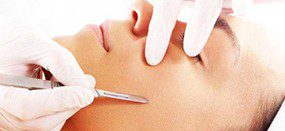5 Basic Skincare and Facial Treatments for Healthy Skin
5 Basic Skincare and Facial Treatments for Healthy Skin
If you want skin that looks and feels its best, knowing the basics is key. Your daily routine is the most important step for long-term results, but professional treatments can give you a significant boost. Understanding basic skincare and facial treatments helps you make smart choices for your long-term skin health and overall appearance. This guide will walk you through the three simple, essential steps you need every day and explain when to consider a deeper, professional treatment. We will dive into the science behind a healthy skin barrier and detail the biggest benefits of popular in-office treatments.

Photo by cottonbro studio on Pexels
1. Why Your Skin Barrier Matters So Much
Think of your skin’s outer layer like a brick wall. It’s made of tough, flattened cells called corneocytes (the bricks) held together by natural oils and lipids (the mortar). This structure, known as the stratum corneum, is your skin barrier. Its main job is to keep good things in—like water, which keeps your skin plump and hydrated—and keep bad things out—like germs, pollution, and dirt. This vital function is formally known as preventing Transepidermal Water Loss (TEWL). Without this protective barrier, the water inside your body would quickly evaporate.
The Power of the Acid Mantle: Your pH Balance
For your barrier to work right, your skin needs to be slightly acidic (a pH of about 4.0 to 5.8). This is called the “acid mantle.” This slight acidity is not a mistake; it’s by design. The acidic environment is crucial for several reasons:
- Enzyme Function: Many enzymes responsible for keeping your skin cells healthy and repairing the barrier only work correctly at this low pH.
- Antimicrobial Defense: The acidic environment helps fight off harmful bacteria and fungi, preventing infections and keeping your skin’s natural balance healthy.
- Barrier Integrity: The acid mantle directly influences how the lipid “mortar” is organized and created, ensuring the barrier remains intact.
When you use harsh soaps or cleansers that are too alkaline (a pH of 7.0 or higher), you strip away this protection. This is why many skin experts recommend cleansing with products that match the skin’s natural acidic pH.

Photo by Kristina Nor on Pexels
Signs of a Damaged Barrier and How to Repair It
If your skin barrier is compromised, it becomes weak and leaky. This leaves your skin vulnerable and causes water to escape quickly. You might notice the following simple signs that your barrier needs help:
- Dryness and flakiness (called xerosis): This is the most common sign of a weak barrier.
- Persistent itchiness and redness.
- Increased sensitivity: Products that never bothered you now sting or burn.
- Breakouts: A compromised barrier allows acne-causing bacteria to thrive easily.
To repair a damaged barrier, simplify your routine and focus on gentle care. Look for moisturizers with key ingredients that mimic the skin’s natural components:
- Ceramides: These are the essential lipids in the mortar of your skin barrier. Applying them topically helps replenish what is lost.
- Occlusives (like petrolatum or mineral oil): These create a physical seal on the skin’s surface, acting like a lid to stop water from escaping (reducing TEWL by up to 99%).
- Humectants (like hyaluronic acid or glycerin): These ingredients draw water from the environment and deeper skin layers into the top layer, providing immediate hydration.
2. Your Essential 3-Step Daily Skincare Routine
Caring for your skin doesn’t need to be complicated or time-consuming. The foundation of effective basic skincare is a simple, consistent three-step process, performed in the morning and repeated at night (with one major difference). Consistency is far more important than using dozens of products.
Step 1: Cleanse Gently and Completely
Cleansing is non-negotiable. It removes overnight residue, daytime makeup, excess oil (sebum), and environmental pollution. Starting with a clean base allows the rest of your products to work correctly.
- Morning Cleanse: A quick rinse with water or a very mild, non-foaming cleanser is typically enough to prep your skin for the day.
- Nighttime Cleanse: This should be more thorough. If you wear makeup or heavy sunscreen, consider a double cleanse: first, use an oil-based cleanser or balm to dissolve makeup, and second, follow with a water-based gel or cream cleanser to wash away any remaining residue.
- Rule of Thumb: Always use a non-stripping cleanser. You should never feel a tight, “squeaky clean” feeling after washing; that means your cleanser is too harsh and has damaged your acid mantle. Remember to use lukewarm water, as hot water is unnecessarily irritating and drying.

Photo by Enecta Cannabis extracts on Unsplash
Step 2: Target and Treat with Serums
After cleansing, the skin is ready to receive concentrated treatments. Serums are potent formulas designed to address specific skin concerns with high levels of active ingredients.
- The Morning Serum: Protection First. The primary concern during the day is protecting your skin from UV light and free radicals (unstable molecules caused by pollution and sun exposure). Look for a serum containing Vitamin C (an antioxidant). Applying Vitamin C in the morning acts as a powerful backup to your sunscreen, neutralizing damage before it can affect your skin cells. It also helps brighten the skin and even out skin tone over time.
- The Nighttime Serum: Repair and Renewal. Night is when your body focuses on repair. This is the ideal time to use stronger active ingredients that promote cell turnover, such as:
- Retinoids (Retinol): These Vitamin A derivatives are proven to reduce the look of fine lines, improve texture, and fade dark spots by speeding up the creation of new skin cells. Always start with a low strength and use them only at night, as they can increase sun sensitivity.
- Acids (AHA/BHA): Alpha Hydroxy Acids (AHAs like glycolic acid) and Beta Hydroxy Acids (BHAs like salicylic acid) are chemical exfoliants. They gently dissolve the bonds holding dead skin cells to the surface. Salicylic acid is particularly effective for acne-prone skin because it can penetrate and clear oil from inside the pores.
Step 3: Moisturize and Protect (The Non-Negotiables)
No matter what serums you use, these two steps are required to seal everything in and finish your routine.
- Moisturize: Moisturizer is essential for all skin types—yes, even oily skin needs it. If you have oily skin, choose a lightweight, oil-free, gel-based, and non-comedogenic (won’t clog pores) formula. If you have dry skin, opt for a richer, cream-based formula with occlusive ingredients. Moisturizing is the final step needed to maintain your skin’s vital barrier function.
- Sunscreen (SPF 30+): The single most important step in every morning routine is applying a broad-spectrum Sunscreen with at least SPF 30. Sunscreen should be applied daily, 365 days a year, about 15 minutes before heading outdoors. It prevents the vast majority of premature aging signs (wrinkles, sun spots) and, more importantly, protects you from harmful UV rays that cause skin cancer. (See: American Academy of Dermatology on Sunscreen). Never skip this step.
4. When to Consider Professional Facial Treatments
While consistent daily care provides up to 80% of your results, sometimes you need a deeper boost. Professional facial treatments give your skin results that at-home products cannot match, offering concentrated delivery, deep cleaning, advanced exfoliation, and specialized equipment. A professional treatment should be seen as an enhancement to your consistent basic skincare and facial treatments at home.
Classic Deep-Cleansing and Hydration Facials
A classic or “European” facial is the perfect starting point for professional care. It’s excellent for monthly maintenance and is often deeply relaxing. These treatments typically involve:
- Consultation and Skin Analysis: The professional assesses your specific skin type and concerns.
- Steaming and Exfoliation: Prepares the skin for deeper cleansing.
- Extractions: Manually clearing clogged pores and blackheads in a sterile environment, which you should never attempt at home.
- Mask and Massage: Applying a mask tailored to your needs (e.g., clay for oily skin, hydrating for dry skin), followed by a facial massage to promote blood flow and reduce puffiness.
Another popular choice is the HydraFacial. This is a specific, patented treatment that uses a wand to cleanse, exfoliate, and suction debris from the pores while simultaneously infusing the skin with powerful moisturizing serums containing antioxidants and hyaluronic acid. It is known for its ability to deliver instant hydration and a glow without downtime.
 Advanced Exfoliation and Renewal Treatments
Advanced Exfoliation and Renewal Treatments
For addressing texture, scarring, and signs of aging, advanced exfoliation methods go deeper than any scrub you can buy over the counter:
- Microdermabrasion or Dermaplaning: These are mechanical exfoliation techniques.
- Microdermabrasion uses tiny crystals or a diamond tip to gently buff away the outermost layer of dead skin. It’s great for minimizing light acne scars, improving texture, and reducing age spots.
- Dermaplaning uses a sterile surgical scalpel to gently scrape the skin’s surface, removing dead skin cells and fine vellus hair (peach fuzz). The results are immediate: smoother skin and better absorption of your serums and moisturizers.
- Chemical Peels: A peel involves applying a chemical solution (often containing alpha-hydroxy acids, beta-hydroxy acids, or trichloroacetic acid) to the skin. The solution causes controlled exfoliation, allowing the outer layers to slough off and reveal fresher, smoother skin underneath. Peels can be customized to different strengths (light, medium, deep) to address various issues, including:
- Reducing fine lines and wrinkles.
- Fading hyperpigmentation and sun damage.
- Improving the appearance of acne scars.
Energy-Based and Light Therapies
Technology allows for highly specific, non-invasive basic skincare and facial treatments:
- LED Light Therapy: This is a gentle, relaxing treatment that uses specific colors (wavelengths) of light to affect the skin:
- Red Light: Penetrates deeper to stimulate the cells that produce collagen, helping to firm the skin and reduce the look of fine lines.
- Blue Light: Works on the surface to kill P. acnes bacteria, making it an excellent add-on for acne-prone individuals.
- Microneedling (Collagen Induction Therapy): This procedure uses a device with fine needles to create controlled, microscopic injuries to the skin. This triggers the skin’s natural healing process, boosting the production of new collagen and elastin. It is highly effective for improving the look of acne scars, large pores, and overall texture.
If you’re interested in learning how to perform these treatments, explore our courses and career paths: Cosmetology Career Paths. or call 801-747-5705
5. Taking Your Skincare Journey to the Next Level
Moving beyond the basic skincare and facial treatments outlined above involves recognizing your skin’s needs and adjusting your routine to environmental and biological factors. For example, during colder months, your skin often requires richer, more occlusive moisturizers to compensate for lower humidity and higher water loss.
Understanding your skin type (dry, oily, normal, combination, or sensitive) is crucial because it dictates the type of cleanser, moisturizer, and treatments that will work for you. Using a harsh product on dry skin or a heavy cream on oily skin will only cause problems. Take the time to identify your type, then choose products that complement it. This personalized approach is a fundamental part of mastering your routine.
For other beauty care essentials, check out our guide on Manicure and Pedicure Essentials.
Conclusion
A healthy complexion is built on consistency and knowledge. Mastering your basic skincare and facial treatments routine is the key to lasting skin health. Start with the three non-negotiable daily steps: cleanse, treat (with targeted serums), and protect (with SPF 30+). When you want to address deeper concerns—like texture, scarring, or advanced signs of aging—professional facial treatments offer powerful, targeted results that can significantly boost the look and feel of your skin. For personalized product recommendations and expert application of advanced treatments, consult a skin professional who can create a plan perfect for your unique skin needs.

